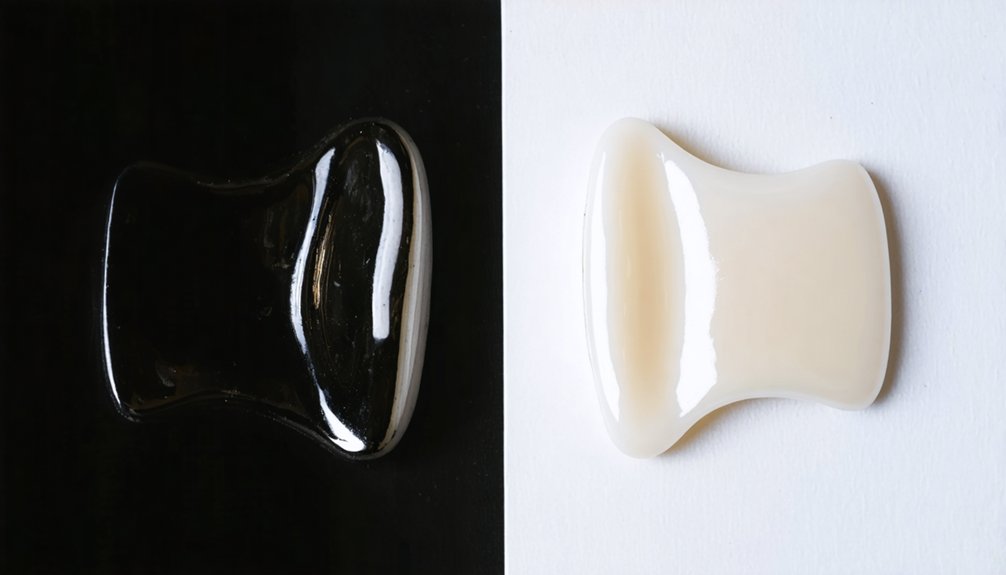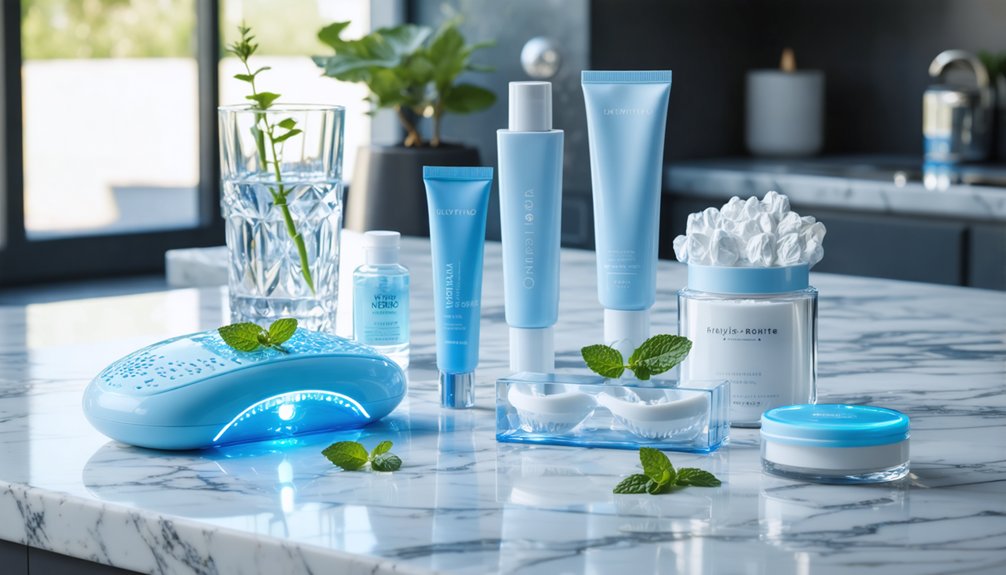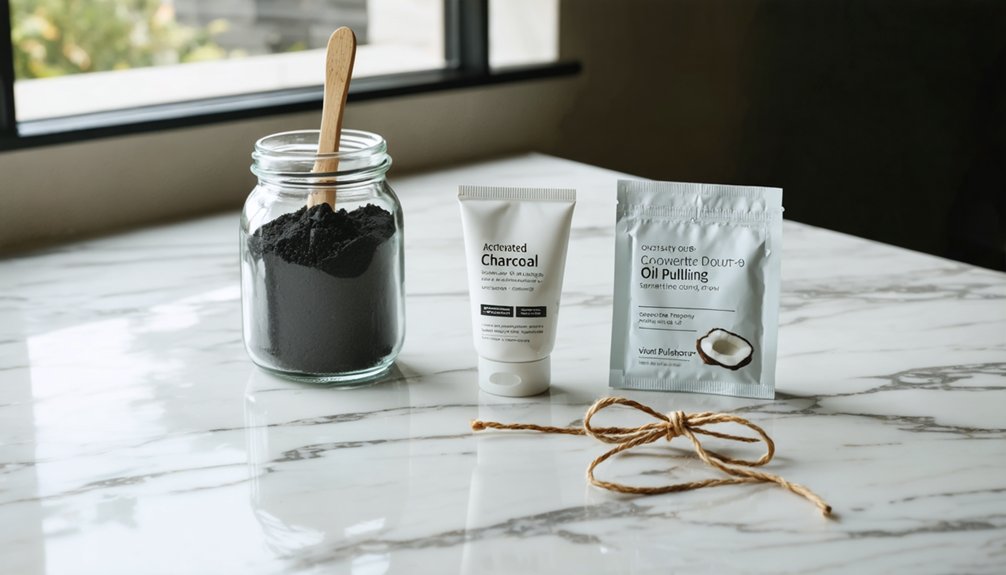Finding the right teeth whitening solution is essential for your oral health and cosmetic goals. The wrong treatment can lead to sensitivity, uneven results, or damage to your teeth and gums. Professional options offer superior whitening agents and customized care, while at-home treatments vary in effectiveness and safety. You’ll need to take into account factors like your dental history, budget, and desired timeline. Understanding your options will help you make a confident choice for your smile.
Key Takeaways
- Different dental conditions require specific whitening approaches to ensure safety and effectiveness while avoiding complications or damage.
- Selecting appropriate whitening methods prevents common side effects like tooth sensitivity and gum irritation.
- The right whitening treatment delivers optimal results based on your budget, timeline, and desired shade improvement.
- Professional supervision ensures proper application and monitoring, reducing risks while maximizing whitening outcomes.
- Choosing between professional and at-home options impacts both immediate results and long-term maintenance of your bright smile.
Understanding the Science Behind Teeth Whitening
While teeth whitening may seem like a simple cosmetic procedure, it relies on sophisticated chemical processes that target stain molecules within your teeth’s structure.
The primary chemical mechanisms involve hydrogen peroxide or carbamide peroxide, which penetrate your enamel to reach deeper stain types. These agents break down into free radicals that attack and dismantle pigmented molecules through oxidation. The reactive oxygen released during this process actively transforms yellow stains into colorless compounds.
Tooth whitening’s power comes from peroxide compounds that break apart stubborn stains through targeted oxidation beneath your enamel surface.
Understanding how whitening works helps you make informed decisions about treatment options. The process targets both extrinsic stains on your enamel’s surface and intrinsic stains within your dentin layer. The pH level of whitening agents directly influences their effectiveness in breaking down stains.
Your results will depend on factors like peroxide concentration, exposure time, and your teeth’s natural permeability. It’s crucial to recognize that while whitening effectively breaks down organic stains, it won’t affect existing dental restorations like crowns or veneers.
Health and Safety Considerations for Your Smile
Before starting any teeth whitening treatment, you must understand the potential health risks and safety considerations to protect your smile. The most common side effects include tooth sensitivity and gum irritation, which can occur when bleaching agents penetrate your enamel or contact soft tissues. Over-the-counter products often require extended use periods to show results, increasing your risk of adverse effects.
Professional treatments using hydrogen peroxide or carbamide provide safe and effective whitening when properly administered.
You’ll need to be especially careful if you have pre-existing dental conditions or sensitive gums.
To safeguard your oral health, consult a dental professional before beginning any whitening regimen. They’ll assess your teeth’s condition, recommend appropriate treatments, and help prevent complications from improper use.
Following professional guidance guarantees you’re using the right concentration of whitening agents and proper application techniques.
Professional vs. At-Home Whitening Options
When deciding between teeth whitening options, you’ll face two primary choices: professional in-office treatments or at-home whitening solutions.
Professional techniques deliver dramatic results in a single session, lightening teeth by 5-8 shades through high-concentration hydrogen peroxide applications. The protective measures for gums during professional whitening ensure a safer treatment experience. These agents break down stains into smaller pieces, making teeth appear brighter. While costing $300-$650, these treatments offer superior customization and dental supervision.
At-home solutions, ranging from $50-$400, provide budget-friendly alternatives that achieve 2-6 shades of whitening over time. These require consistent application over days or weeks but offer flexibility in scheduling.
You’ll need to weigh the convenience of one-visit professional results against the gradual improvement of at-home methods. Consider your timeline, budget, and desired outcome when choosing between these options, as professional results typically last longer but require a higher initial investment.
The Personal Benefits of a Brighter Smile
A brighter smile can profoundly impact your psychological well-being and social interactions. When you invest in teeth whitening, you’ll experience a significant self-esteem boost that extends into multiple areas of your life.
Research shows that a whiter smile leads to improved confidence, reduced anxiety, and enhanced social comfort. Studies reveal that satisfaction with tooth color directly influences a person’s willingness to smile and engage socially. Professional treatments provide lasting results that help maintain your newfound confidence.
- You’ll notice increased dopamine and serotonin release, contributing to better emotional resilience and overall happiness.
- Your social interactions will become more natural and engaging, as you’ll feel more comfortable expressing yourself.
- You’ll project a more successful, intelligent, and healthy image, leading to better first impressions.
The psychological benefits of teeth whitening often persist long-term, even if some whitening effects fade.
You’ll maintain improved social confidence and reduced anxiety about your appearance, supporting lasting positive changes in your interpersonal relationships.
Making an Informed Investment in Your Dental Care
Building on the psychological advantages of a brighter smile, making smart choices about teeth whitening requires careful consideration of professional versus over-the-counter options.
When you assess your dental investment, professional treatments often deliver superior long-term value through concentrated bleaching agents and customized application methods. You’ll benefit from expert supervision that prevents costly damage while achieving more predictable results. A customized treatment plan ensures optimal whitening for your unique dental characteristics.
Your whitening value extends beyond aesthetics when integrated with routine dental care. Professional treatments complement regular cleanings, enhance oral health monitoring, and provide lasting results that reduce the need for frequent touch-ups. The one-hour treatment delivers immediate improvements that make professional whitening especially appealing for those with busy schedules.
Frequently Asked Questions
How Long Do Teeth Whitening Results Typically Last Before Needing Touch-Up Treatments?
Your teeth whitening results can last between 6 months to 3 years, depending on whitening frequency, teeth sensitivity, and lifestyle habits. You’ll need touch-ups when you notice fading beginning.
Can Teeth Whitening Remove Stains Caused by Medications or Dental Work?
Like a deep river’s stains, medication effects often resist whitening treatments. You’ll find that intrinsic discoloration from dental procedures and medications typically requires veneers or crowns for effective coverage.
Is It Safe to Whiten Teeth While Pregnant or Breastfeeding?
You should postpone teeth whitening while pregnant due to increased teeth sensitivity and limited safety research. If breastfeeding, consider natural alternatives or consult your dentist before proceeding with any whitening treatment.
Do Whitening Toothpastes Actually Work to Maintain Professional Whitening Results?
Yes, whitening toothpaste’s ingredients help maintain professional whitening efficacy through surface stain removal, though they’re less potent than professional treatments. You’ll need consistent use to preserve your results effectively.
What Foods and Drinks Should Be Avoided During the Whitening Process?
You’ll need to avoid dark-colored beverages like coffee and wine, acidic beverages including citrus juices, and staining foods like berries. Limit sugar consumption to maintain your whitening results.
References
- https://www.alpinewhite.com/en/article/teeth-whitening-statistics/
- https://adanews.ada.org/huddles/cosmetic-teeth-whitening-may-be-more-popular-than-ever/
- https://www.thedentalspajersey.com/blog/teeth-whitening-statistics-2024
- https://www.statista.com/statistics/287384/usage-of-tooth-whiteners-in-the-us-trend/
- https://pmc.ncbi.nlm.nih.gov/articles/PMC12330114/
- https://www.loudfamilydentistry.com/blog/teeth-whitening-related-statistics-on-effectiveness-and-sensitivity-incidence
- https://pmc.ncbi.nlm.nih.gov/articles/PMC4058574/
- https://www.mouthhealthy.org/all-topics-a-z/teeth-whitening
- https://www.hinsdaledental.com/blog/6-facts-about-teeth-whitening-you-should-know/
- https://www.dentalhealth.org/blog/facts-tips-tooth-whitening



